Christmas markets are a great European tradition that has crossed the Atlantic into the US. December is a great month to find one near you.
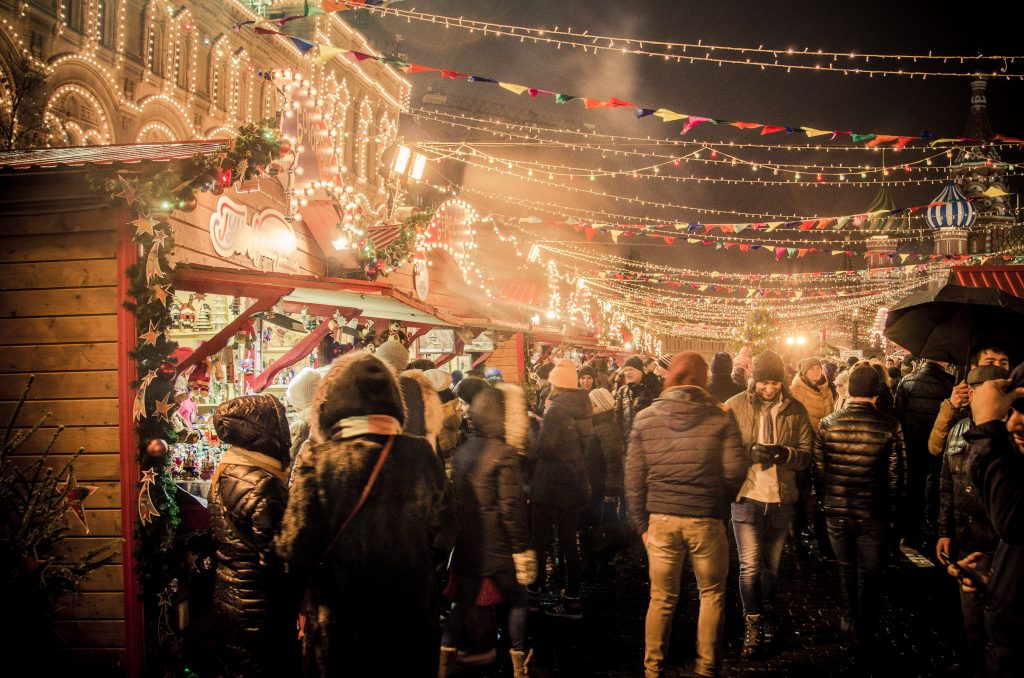
Christmas Market Visit
As an East Coast transplant, I’ve enjoyed many different events that the East Coast has to offer. One of my favorite things to do is visit New York City during Christmas time. The city transforms into a wonderful winter wonderland full of lights and plenty of Christmas entertainment. One of my favorite things to do is to visit the Christmas markets around the city. Although many of the Christmas markets around the city are phenomenal, my favorite one is the Union Square Christmas Market.
One of the best Christmas markets in the world, Union Square is a popular destination. Travel site Big 7 Travel ranked it as must-see activity. It annually draws in around 2 million visitors. The Union Square Christmas market offers vendors, food, and plenty of entertainment. Another point of interest, is its location. Union Square is located at the intersection of Broadway and Fourth Avenue. As noted, its location in Manhattan is central to many subway lines and neighborhoods.
As a matter fact, Union Square is nearby some of the most popular neighborhoods in Manhattan. For example, Grammercy, the Flatiron District, and Greenwich Village are all close to Union Square.
Visiting Union Square
The Union Square Christmas Market opened on November 17th. The market open everyday from 11 am to 8pm. Depending on where you are coming from, getting to Union Square is easy to get to. The 4,5, or 6 train all stop at Union Square . As a matter fact, you will not even have to walk as the market is directly on a subway stop.
Now that we have entered the month of December, if you plan to visit the Union Square Christmas Market, make sure to bundle up. Temperatures in December in New York City range from 44-32 degree Farenheit. You will definitely want to bring gloves, a winter coat, and your favorite scarf.
I recommend visiting before December, as crowds can get pretty big the close your get to the holidays. This year Union Square has 185 vendors and food to enjoy from. Expect to see New York Ukrainian favorite Veselka, Breezy. T Hill Orchard Cider will also be present . eMCee Apparel will showcase her own twist on Jean-Michel Basquiat-inspired art. The apparel pays tribute to hip-hop icons. Returning vendor Dash of Pep, a boutique creating unique apparel, accessories, and stationery promoting mental health, self-expression, and empowerment.
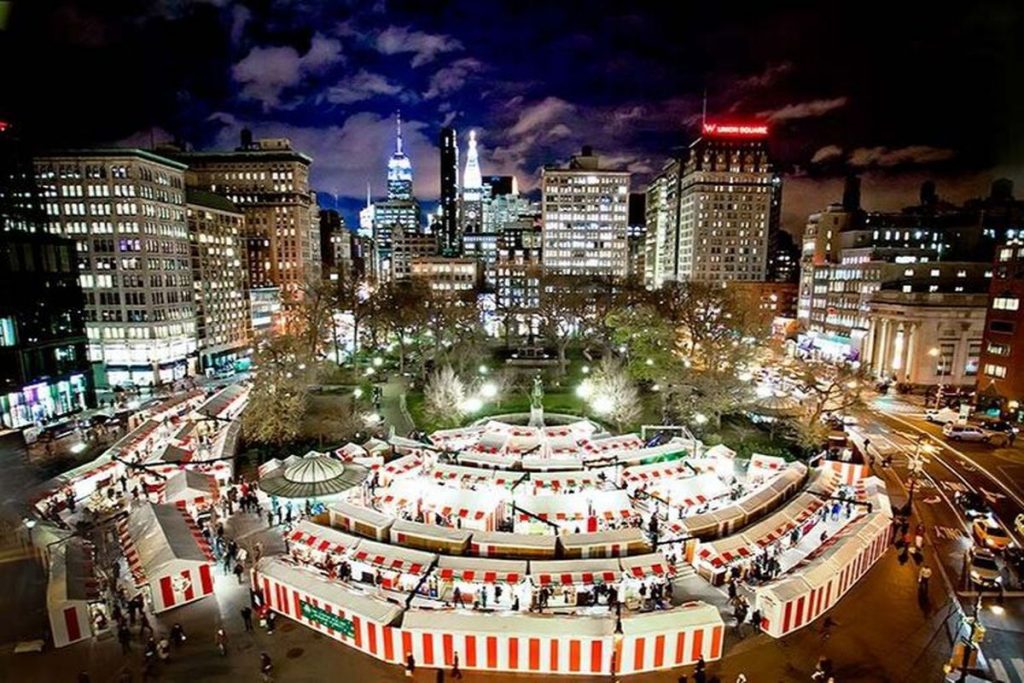
Things To Take Note Of
It is easy to lost track of time with the many shops and food booths set up. If you like soaps and lotions as I do, this Christmas market is paradise. There were several local vendors offering many different lotions, oils, and soaps. Additionally, there were also many local art vendors with many unique art displays. Equally important, are the photographers that display iconic New York City photographs. Custom jewelery makers are also eager to show you their unique designs. y.
The food vendors at the Union Square Christmas Market are also phenomenal. You can experience anything from Colombian empanadas to Chinese pork buns. One particular vendor offered duck fries and other duck entrees. Likewise, you can also enjoy the many desserts that the market has to offer. They range from French macarons to hot apple cider. One of my favorite things to enjoy are the apple cider donuts. You can get a bag of three for only $3. You cannot find a better deal than that.
Apple Cider
While the popularity of these delicious donuts originally took off on the northeast coast, over the years their reputation spread. Apple cider donuts are now pretty easy to find anywhere you look during fall months. Because apples are cultivated in many climates, finding an orchard should be relatively easy. If you’re in the mood to go apple picking you can make it an adventure. It’s basically a requirement this time of year.
Apple cider donuts are a cake donut made wit apple cider. Unlike most donuts that are generally sweetened, these sweet treats are directly infused with apple cider. This gives them their distinct flavor. Their classic coating of cinnamon and sugar is the traditional choice. They also can be made with more classic donut store toppings like chocolate or maple glazes.
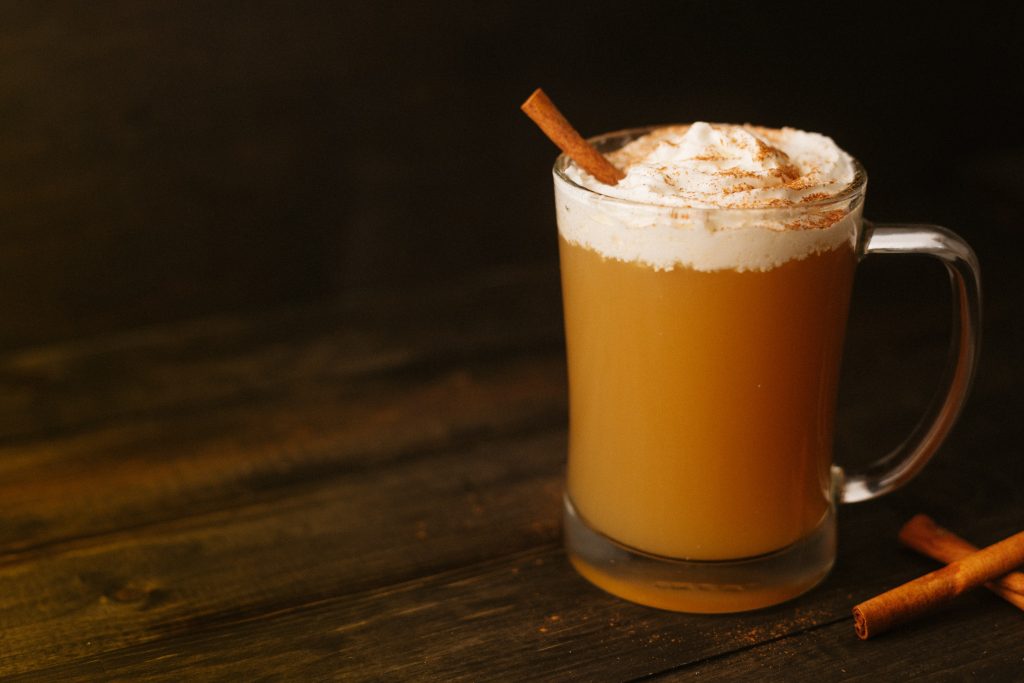
Where Did Christmas Markets Come From?
The first Christmas market can be traced to Vienna in the Middle Ages. The first Christmas markets started out by selling. meat. Throughout the years, the markets evolved to sell seasonal treats, decorations, and to become a place for people to socialize.
Interestingly, protestant Martin Luther helped popularize Christmas markets by suggesting that birth of Christ was great holiday to give a gift. Although the churches had previously encouraged the Christmas markets, quickly found themselves competing for their congregation. Markedly, there is a now famous tale of a priest in Nürnberg who, in 1616, complained that he was unable to hold the afternoon service on Christmas Eve because no one was in attendance – his congregation was shopping at the market. It was during this time that Christmas gift-buying took off, with the markets serving as the main location for buying seasonal treats and toys. Ironically, it seems that although centuries removed, Christmas markets and shopping still lure many people to them.
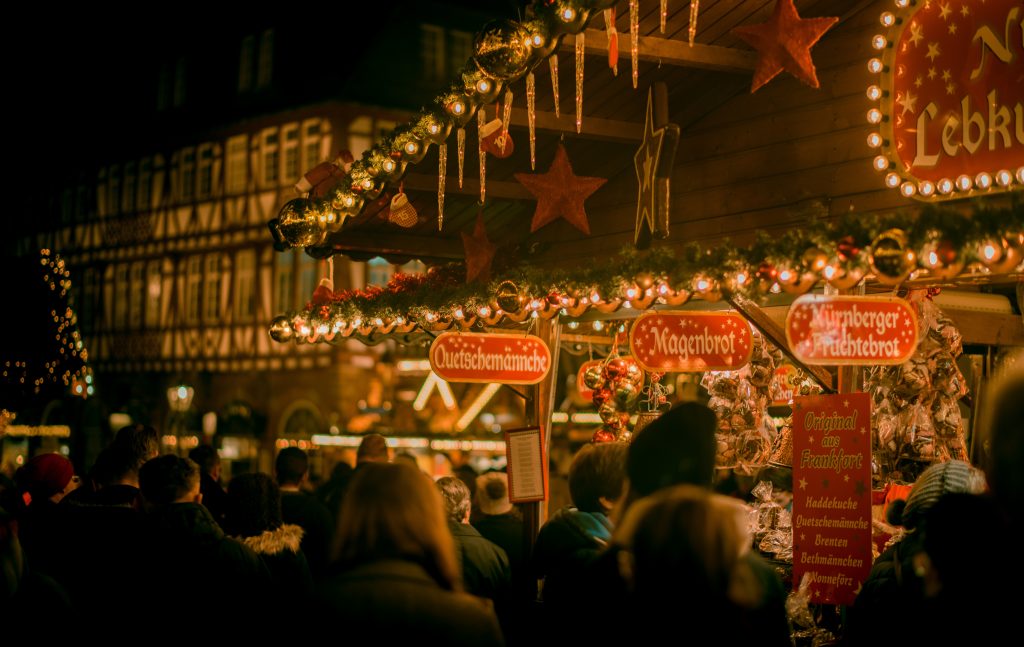
In Germany, Christmas markets are often called “Christkindlmarkt” or “Weihnachtsmarkt”. The last name simply means “Christmas market” whereas the first name originates from the tale of the Christkind or Christchild. In many locales on opening nights, onlookers welcome the “Christkind“, or boy Jesus.
Christmas Markets in the 20th Century and Modern Age
The evolution of Christmas markets throughout Europe, specifically, Germany is an interesting one. Throughout the 20th century, consecutive German governments attempted to reinvigorate Christmas markets. Nazi Germany – and later the German Democratic Republic (East Germany) – used the markets’ ability to cater to a variety of tastes and needs to serve the parties’ respective political, social and cultural purposes. The Christmas market became a tool for the government.
In particular, they were intended to increase patriotism and social cohesion. The return of the Christmas market to Nuremberg in 1933 was marked by a grand opening ceremony, which promoted nationalism and the celebration of German traditions. In sum, a key point for the rising political party in Germany at the time.
The first German-format Christmas markets in the UK were started in Lincoln in 1982, and in Birmingham in 1997. They reflected a wider trend: many European cities saw the success of Christmas markets in Germany, and began hosting their own. Since then, this format has successfully travelled the globe, marking the Christmas season and enhancing community spirit. In the United States Christmas markets tend to adopt the culture of the city in which they are located in. In similar fashion, Union Square is as diverse as New York City itself.
The History of Union Square
While every Christmas market across the nation has a unique set up. Union Square is particularly special. For nearly 170 years Union Square has been a gathering place—for commerce, for entertainment, for labor and political events, and for recreation. The park owes its name to its location at the intersection—or union—of two major roads in New York City, Broadway andFourth Avenue. When the Commissioner’s Plan, the famous gridiron of Manhattan streets and avenues, was projected in 1807, the former potter’s field at this intersection was designated as Union Place. The site was authorized by the State Legislature as a public place in 1831 and acquired by the City of New York in 1833.
Union Square Opening
On July 19, 1839 Union Square opened to the public. Its paths, situated among lushly planted grounds, were inspired by the fashionable residential squares of London. The design emphasized the park’s oval shape (enclosed by an iron picket fence) and focused on a large central fountain, which was installed for the opening of the Croton Aqueduct in 1842. As New York City’s downtown expanded northward, Union Square became an important commercial and residential center. Around its borders sprang up houses, hotels, stores, banks, offices, manufacturing establishments, Tammany Hall, and a variety of cultural facilities, including music auditoria, theatres, and lecture halls. The grounds of Union Square have frequently served as a choice location for public meetings, including parades, labor protests, political rallies, and official celebrations such as the Great Metropolitan Fair of the U.S. Sanitary Commission in 1864.
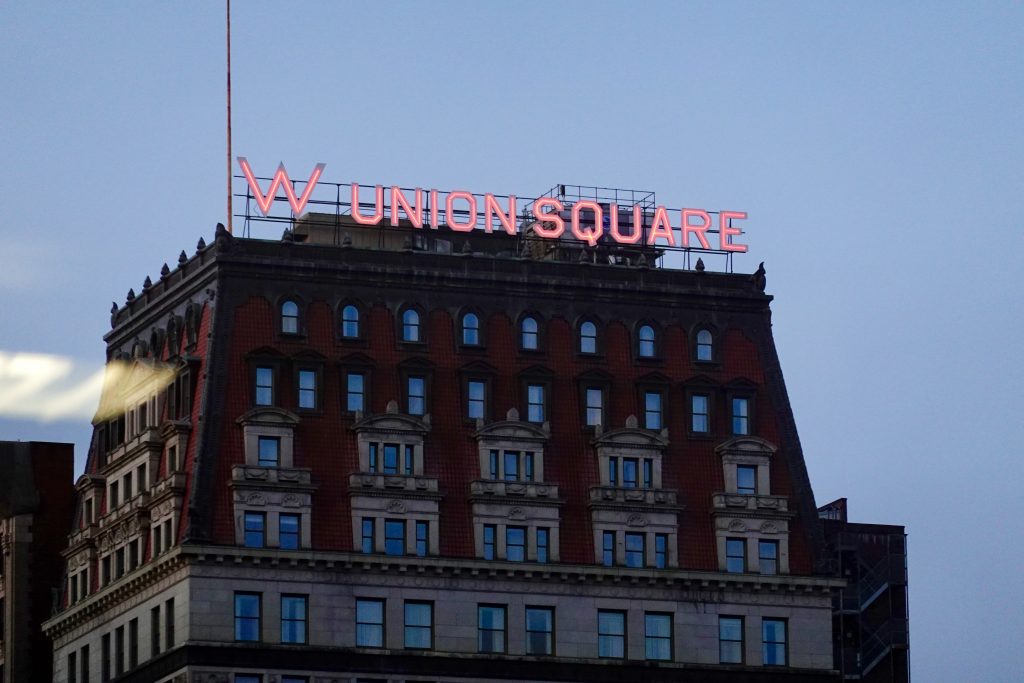
In 1871 Parks Engineer in Chief M.A. Kellogg and Acting Landscape Gardener E.A. Pollard collaborated on a new plan for Union Square. A year later the park was redesigned by landscape architects Frederick Law Olmsted and Calvert Vaux. They removed the enclosing fence and hedge, planted a variety of hardy trees, and widened the sidewalks, and created a muster ground and reviewing stand “to meet the public requirement of mass-meetings.”
Ten years later, Union Square played a central role in the first Labor Day celebration. On September 5, 1882, a crowd of at least 10,000 workers paraded up Broadway and filed past the reviewing stand at Union Square. As the procession passed the stand, Robert Price of Lonaconing, Maryland said to Richard Griffiths, the General Worthy Foreman of the Knights of Labor, “This is Labor Day in earnest, Uncle Dick.” On June 28, 1894, President Grover Cleveland signed the legislation which made Labor Day a national holiday.
Renovation of Union Square
In 1928-29 Union Square was completely demolished to accommodate a new underground concourse for the subway. Alterations made in the 1920s and 1930s included the straightening of park paths, the construction of a colonnaded pavilion, and the dedication of the Independence (Charles F. Murphy Memorial) Flagstaff (1926, sculpted by Anthony de Francisci). Earlier monuments in the park include George Washington (1856, Henry Kirke Brown), Abraham Lincoln(1868, also Brown), Marquis de Lafayette (1873, by Frédéric-Auguste Bartholdi), and the James Fountain (1881, by Karl Adolph Donndorf). Since 1976 the Union Square Greenmarket has served as a local landmark, offering a cornucopia of fresh food and plants on the north side of the park, where a flower market flourished over a century ago.
Threatened by general misuse, deterioration, and the presence of drug dealers in the 1970s, Union Square has recently undergone a dramatic transformation. In 1985 major renovations under Mayor Edward I. Koch included creating a new plaza at the south end of the park, relocating paths to make the park more accessible, planting a central lawn, and installing new lighting and two subway kiosks. In 1986 a monument to Indian political leader and social reformer Mohandas Gandhi (1986, by Kantilal B. Patel) was dedicated on a traffic island southwest of the main park. Two new playgrounds were constructed in 1993-94, and a restaurant opened in the sunken courtyard outside the pavilion in 1994.
Landmark Designation
In 1997, the United States Department of the Interior designated Union Square Park as a National Historic Landmark because of its significance in American labor history. Plans are underway to extend the park line south 14th Street, and to incorporate in the park the traffic island on which the Gandhi statue now stand. Union Square serves as not only a beacon New York City history but now also a place where people can come together to celebrate the holidays.
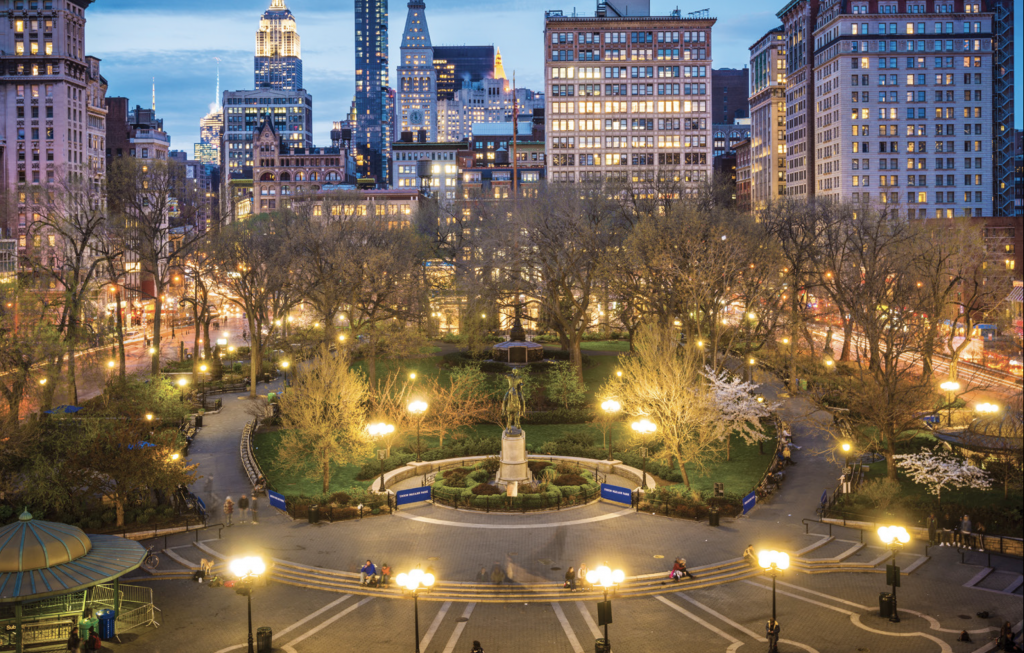
Other Christmas Markets
Bryant Park Winter Village
Bryant Park also has a European-style Christmas market. It first introduced the holiday shops in 2002 as a way to draw people to the green space during the Christmas season. Modeled after a traditional German Christkindlmarket, the first village featured only 80 vendors during its inaugural event. The free-admission skating rink was later added in 2005 along with a longer roster of artisans and food vendors. Today, the winter village is regarded as one of the must-see destinations during the holidays in New York City since it has over 170 holiday shops.
As mentioned above, Bryant Park is famous for its ice rink. Many people come to the park to not only enjoy the Christmas market but enjoy some ice skating. Bryant Park is located 40th to 42nd Street between 5th and 6th Avenue, and is open from Monday through Friday from 11 a.m. to 8 p.m., and Saturday through Sunday from 10 a.m. to 8 p.m. It is easily accessible from Grand Central or Time Square. Select shops tend to be open later in the holiday season, usually after December begins.
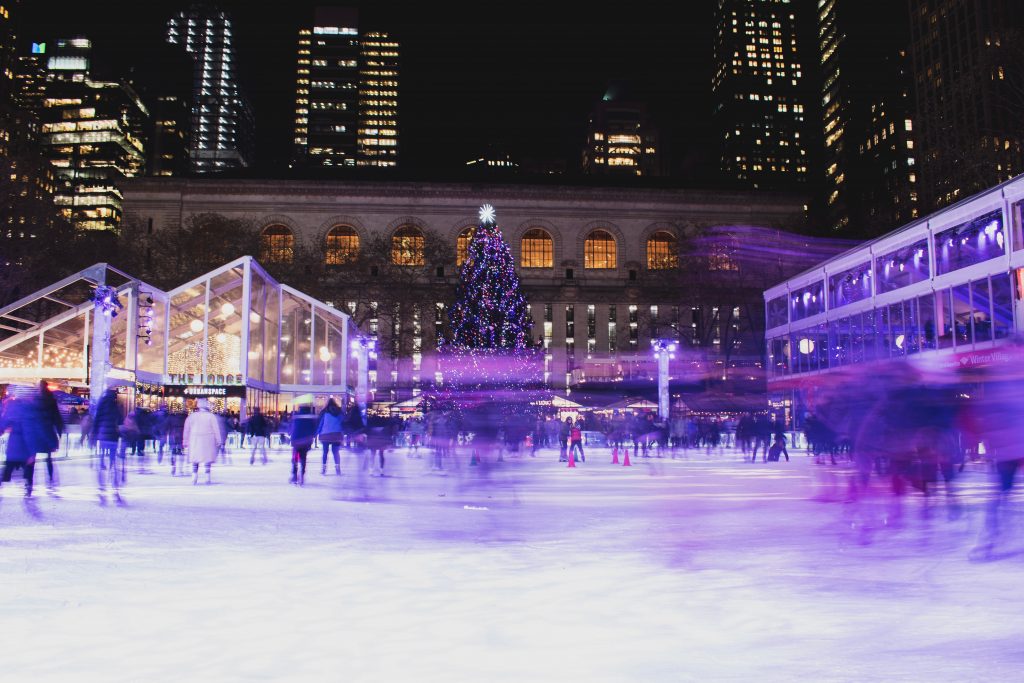
Columbus Circle Holiday Market
The Columbus Circle Holiday Market is located in one of the most stunning locations in New York City—historic Central Park. Situated at 59th Street and Central Park West near the southwest entrance of the park, the market is the perfect place to enjoy a hot meal or snack, shop for holiday gifts and spend time with friends and family.
The Columbus Circle Holiday Market will run November 29 – December 24, Monday – Saturday 11am-8pm and Sunday 11am – 7pm. Columbus Circle Holiday Market has 130 vendors for you to visit. Columbus Circle is accessible on the 1 train. Once you have enjoyed the holiday market, you can also enjoy the shops located nearby.
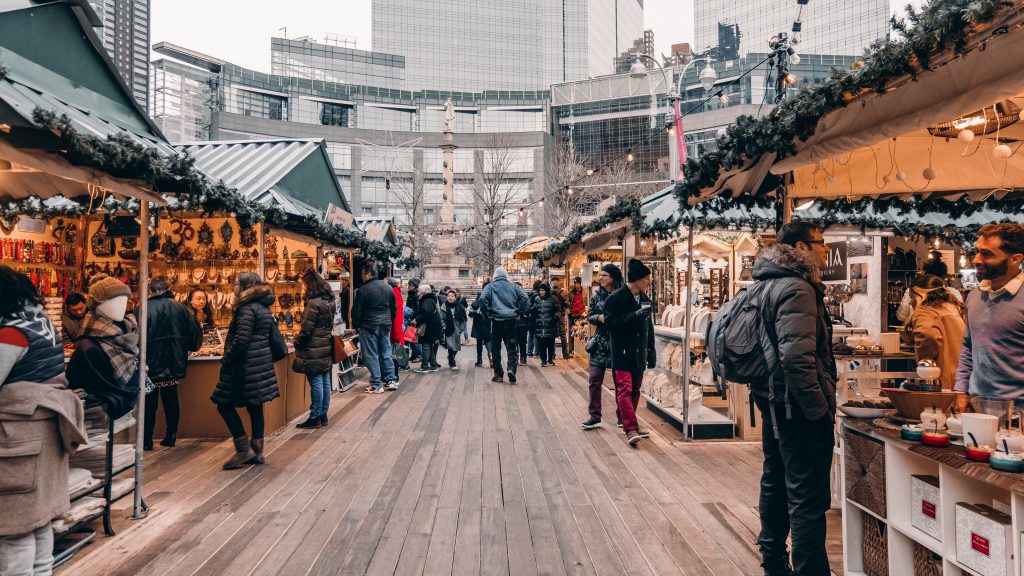
Grand Central Holiday Fair
After a long two year absence due to COVID-19, the Grand Central Holiday Fair has returned. It is New York City’s longest-running indoor Holiday Fair, presented by SL Green Realty Corp. and AmericanGreetings.com. Showcasing 36 local-artisan vendors offering one-of-a-kind products across a variety of categories, the Grand Central Holiday Fair runs for six weeks. One of New York’s most extraordinary shopping events, the Grand Central Holiday Fair takes place in the stunning beaux-arts Vanderbilt Hall welcoming countless visitors for a truly curated holiday shopping experience.
This year’s fair features unique local artisans and small businesses with a focus on quality craftsmanship and products made in New York and the United States. Vendors offer a diverse mix of gift-able items, including men’s and women’s clothing and accessories, original artwork, jewelry, stunning holiday keepsakes and distinctive home décor, self-care products, and endless varieties of handcrafted goods. The great thing about this Christmas market that is it easy to get to Grand Central. The train terminal also has a variety of restaurants and shops not related to the Christmas market that you can visit after visiting the holiday fair.
Turnstyle Holiday Market
What could be cooler that and underground shops? An underground holiday market. The Underground Market also known as Turnstyle has added an extra 39 vendors for the holidays. It’s perfect for those who want to stay indoors. They are located beneath 8th Avenue, between 57th and 58th Street. There are seven street-level entrances to the market. The market is easily accessible through the subway system or street entrances.
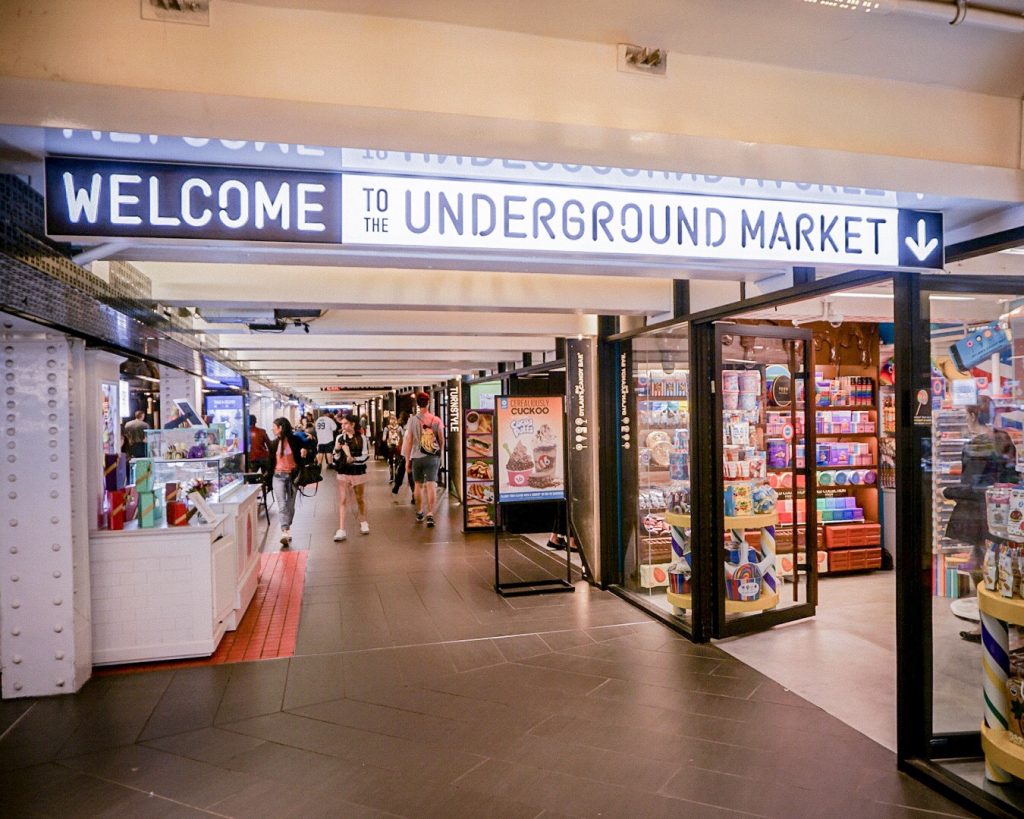
Alternatives to the Christmas Markets
Although Christmas markets are popular in New York City and other cities throughout Europe, they may not be for everyone. However, we recommend that if you are not interested in a traditional Christmas market but still want to experience New York City in December, to visit the locations listed below.
Rockefeller Center Christmas Tree
The Rockfeller Center Christmas Tree was lit on November 30th , 2022. The tree is lit daily from 6am to 9pm until January 15th. On Christmas Day, the tree will be lit for 24 hours and on New Years Eve it is lit from 6am to 9pm. The Rockefeller Center Christmas Tree is a must-see if you are visiting New York City. It has been featured in many holiday films such Home Alone 2: Lost in New York. Getting to the Rockefeller Tree take the B/D/F/M train to 47th-50th Sts-Rockefeller Center.
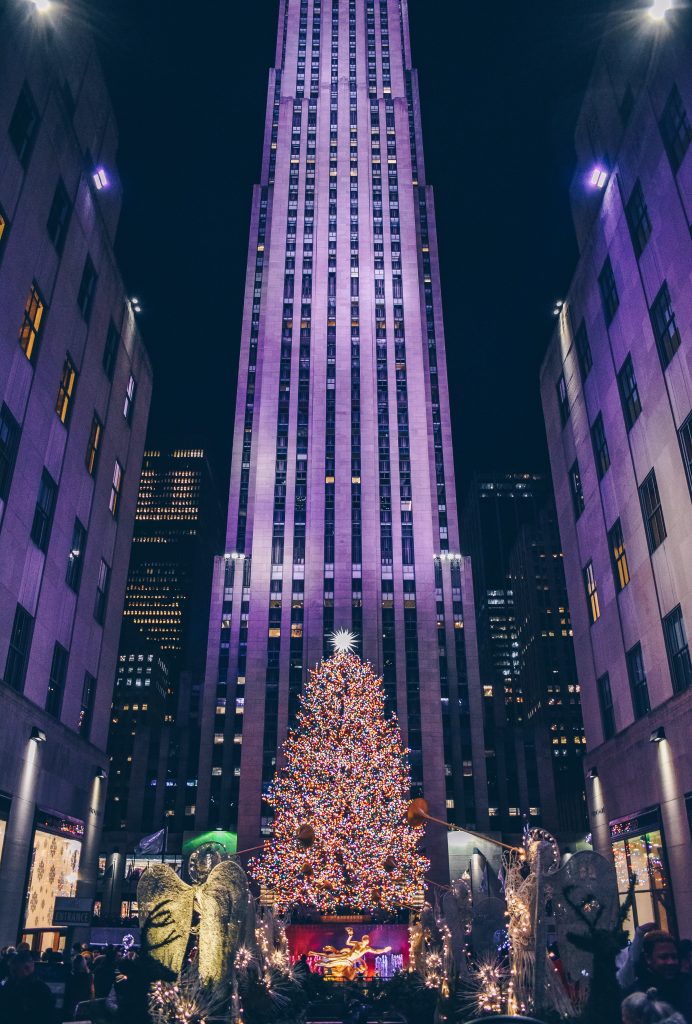
Where does the tree come from?
This year’s tree is a 82-foot Norway that weighs 14-tons. It is adorned with thousands of lights and topped with a star encrusted with millions of crystals. The tree, whose lower branches extend 50 feet in diameter, will be a glow with 50,000 multicolored lights and topped with a 900-pound star covered in 3 million crystals. The tree is 90 years old and is from Queensbury, New York.
Where did the Rockefeller Center Christmas tradition come from?
On Christmas Eve, 1931, at the height of the Great Depression, workers at the Rockefeller Center construction site decided to pool their money to buy a Christmas tree . It was a 20-foot balsam fir that they decorated with handmade garland and strings of cranberries from their families. The men lined up at the tree to receive their paychecks.
Two years later in 1933, a Rockefeller Center publicist decided to make the tree an annual tradition. The first official lighting ceremony was with a 50-foot tree. In 1936, they put up two trees to mark the opening of the skating rink. They also held an ice skating competition.
World War II and Post World War II
During World War II, the tree’s décor switched to a more patriotic theme, with red, white, and blue globes and painted wooden stars. In 1942, no materials needed for the war could be used on the tree, and instead of one giant tree, there were three smaller ones, each decorated in one of the flag’s three colors. The tree was also the first planted after the holidays. In 1944, the tree remained unlit due to wartime black-out regulations. When the war ended in 1945, six ultraviolet light projectors were used to make it appear as though the tree’s 700 fluorescent globes were glowing in the dark.
In 1951, NBC televised the tree lighting for the first time with a special on The Kate Smith Show. Now that the entire nation was seeing the tree, the decorations became more elaborate and it was taking 20 workers on scaffolding nine days to fully decorate it.
Traveling to New York
Military Fares is here to assist you in finding the cheapest tickets and discounted air fares to New York. Make sure to visit our website for special military deals so you to can visit all these great sites!
